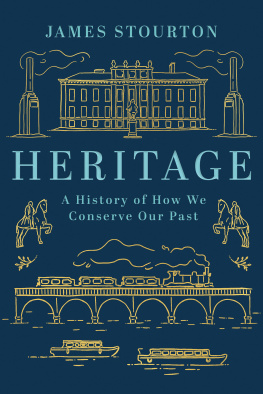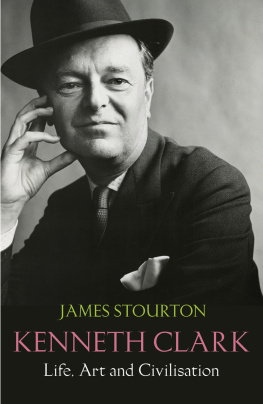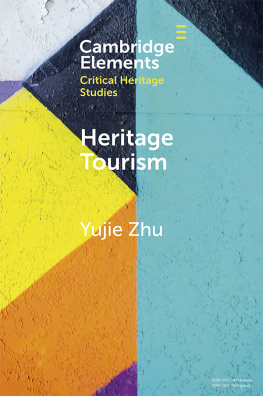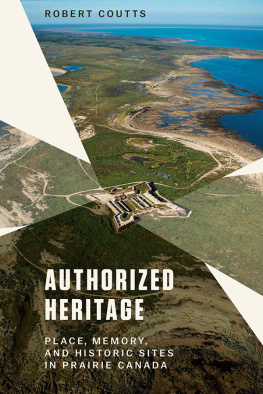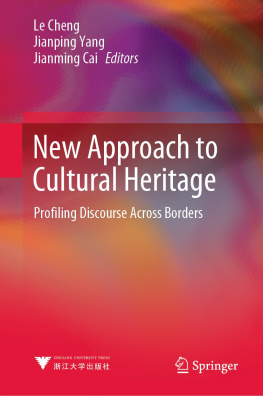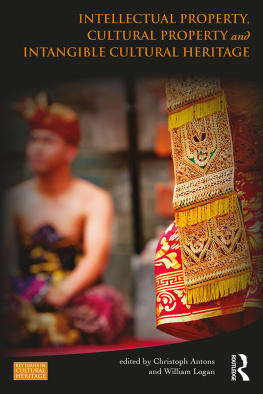JAMES STOURTON
HERITAGE
A History of How We
Conserve Our Past
www.headofzeus.com
First published in the UK in 2022 by Head of Zeus Ltd,
part of Bloomsbury Publishing Plc
Copyright James Stourton, 2022
The moral right of James Stourton to be identified as the author of this work has been asserted in accordance with the Copyright, Designs and Patents Act of 1988.
All rights reserved. No part of this publication may be reproduced, stored in a retrieval system, or transmitted in any form or by any means, electronic, mechanical, photocopying, recording, or otherwise, without the prior permission of both the copyright owner and the above publisher of this book.
A catalogue record for this book is available from the British Library.
.
Every effort has been made to contact copyright holders for permission to reproduce material in this book. In the case of any inadvertent oversight, the publishers will include an appropriate acknowledgement in future editions of this book.
ISBN (HB): 9781838933166
ISBN (E): 9781838933180
Head of Zeus Ltd
58 Hardwick Street
London EC1R 4RG
WWW . HEADOFZEUS . COM
To Richard Davenport-Hines
Contents
History therefore is constituted in large part by testimonies of loss.
P ETER F RITZSCHE
H ERITAGE IS WHO WE ARE and where we live. It is the place we were born, the street we inhabit, the local park and the places we visit. It is about stretches of countryside, towns and cities, historic churches, treasures in museums, railways and canals in fact anything from Britains past deemed worthy of preservation by virtue of its associations, historical value or beauty, the removal or despoliation of which would threaten the quality of our lives and environment. Everybody has their own private and sacred places of heritage: landscapes, music and objects sanctified by memory and association. I am no exception, and it is only fair to the reader to say something of my background, interests and experiences which inform the narrative. As will become apparent, many of the chapters turn out to have more relevance to my own past than I supposed when I began writing.
I was born and brought up in North Yorkshire in a family where heritage appeared against a background of decline. The fortunes of my Roman Catholic forbears had been in decline since the Reformation, although never quite snuffed out. We lived in the shadow of the family Valhalla, a Gothic pile called Allerton Park, which I thought of as Gormenghast until everybody began to refer to it as Hogwarts. It exercised a powerful spell over me as a place of vastness, mystery and secret rooms. The fact that it was a stupendous example of Victorian hubris escaped me then; the fake was more powerful than the reality, presenting an early lesson that heritage could embody a reinvented identity. Walter Scott has much to answer for.
After my grandfather died in 1965, the house was occupied by priests training for the African missions, and later as a convalescent home, until to everyones surprise, a romantically minded American bought it in 1983 because it reminded him of Cinderellas castle; Disney had replaced Walter Scott as the cultural driver. Today, renamed Allerton Castle, it is a wedding venue, and noise from the widened A1 motorway screams across the park.
Then there was my mothers family home, Heslington Hall, just outside York, half Elizabethan, half Victorian, barely occupied since the war. My maternal grandfather sold the house and park for a favourable price to one of the heroes of this book, the city councillor and philanthropist J. B. Morrell, as a setting for York University. The Hall took on the role of Senate House, a clear case of social gain trumping heritage loss. The adaptation of both these family houses was a suitable allegory of Britain in a changing world.
As a child my earliest fascination, however, was not yet designated as heritage. It was the rows of steam engines and rolling stock in the railway sidings entering York that first stirred my imagination. Then, at the age of five, I was taken to London, where I made a child-Fauvist drawing of Tower Bridge which my mother turned into a plate it is the only childhood object that I still possess. As a Roman Catholic, I was sent to be educated at Ampleforth, which had mostly Victorian collegiate architecture but also a distinguished twentieth-century abbey church by Giles Gilbert Scott. This presented a fascinating problem begun before the war in an updated but nevertheless ornate Gothic Revival style, and then finished after the war in a stripped-down 1950s manner. I would spend the Sunday church services reconstructing the possibilities in my mind.
The school was within the North York Moors National Park, rich in scenery, history and buildings. The jewel was without doubt Rievaulx Abbey, set in its valley under the terrace and temples of Duncombe Park. How England consoles and warms one, in these deep hollows, where the past stands almost stagnant, wrote Virginia Woolf. Nobody described this area better than Herbert Read in his poetic autobiography, The Contrary Experience , which first taught me to make the link between landscape, poetry and history. If the North York Moors gave me a life-long love of walking, they also offered architectural discoveries like the ancient crypt of Lastingham, St Mary and magnificent Castle Howard.
At Ampleforth my development was stimulated by the two early giants of heritage, William Morris and John Ruskin. As at most schools, sport was placed on a higher pedestal than art, so I had to become an autodidact. My discovery of Morris changed everything, and I enrolled as the youngest member of the William Morris Society. Under his influence I took up calligraphy and printing, and he led me to John Ruskin and my first encounter with the 1880s conservation movement. I remember the excitement of lugging the two volumes of Collingwoods life of Ruskin back on the bus from a second-hand bookshop in York. Like Ruskin, Morris opened many avenues and introduced me to the idea of building protection, something that seemed oddly irrelevant to the rest of 1960s Britain.
It was watching Kenneth Clarks Civilisation that confirmed the direction of my life. My first heritage intervention came in my last year at school, when the Guardian published my letter defending the seminal exhibition at the V&A, The Destruction of the Country House, against a hostile review a subject near to my heart, given how close both Allerton and Heslington had come to demolition.
When my parents left Yorkshire, we moved to Angus on the east coast of Scotland, close to the ancient Pictish symbol stones at Aberlemno. The nearest city was Dundee, a powerful spectacle of urban decline in the 1970s, and if I write so much about regeneration in this book it is because of that indelible memory, and my delight in seeing Dundee revive. Dundee was a problem city; Edinburgh, by contrast, was a model of conservation, and the reader will find some of the reasons in this book.
In 1975 I went to read history of art at Cambridge. The faculty was in a ferment of ideas and a powerhouse of the newly invigorated architectural history studies, with lectures by Gavin Stamp, John Harris, Marcus Binney, and from the older generation, John Summerson all of whom play prominent roles in this book. My tutor, David Watkin, was anti-modernist, determined to prove that Nikolaus Pevsner had got it wrong about zeitgeist and architecture, but my university friend, Alan Powers, convinced me that the modern movement should be respected.
From Cambridge I joined Sothebys paintings department as a cataloguer in 1979. It was an exciting time, when London was the leader of the world art market and Sothebys evinced a giddy international ambition. The home market, however, was wearily familiar to me largely the dispersal of country house collections. Two years earlier, the firm had held the Mentmore sale, a triumph for Sothebys and something of a turning point in the heritage story, as we shall see. But what had become of the disciple of Morris and Ruskin? I kept my hand in, printing books by hot metal in Hackney at weekends, and might have continued. However, at the end of the 1980s my career took me to the continent, where I was predominantly to operate for the next decade and more. If I could no longer print books, I could write them, and the first fruit of my time exploring this new terrain was Great Smaller Museums of Europe , a book largely about the transition of art from the private sector to the public and my first real engagement with museums.

